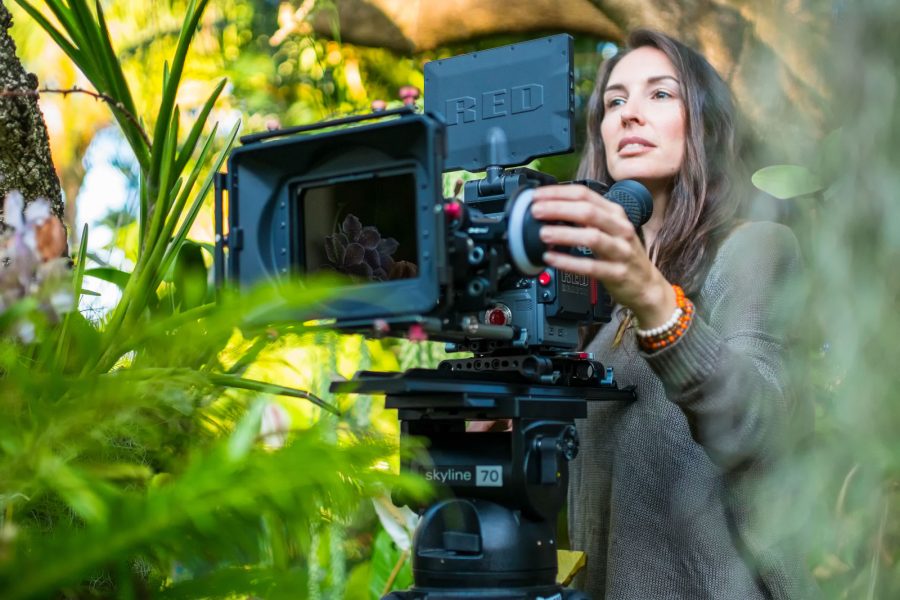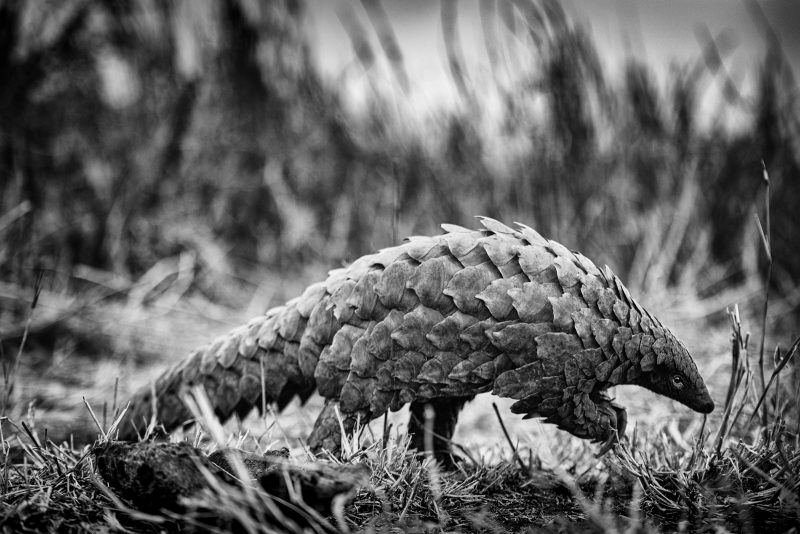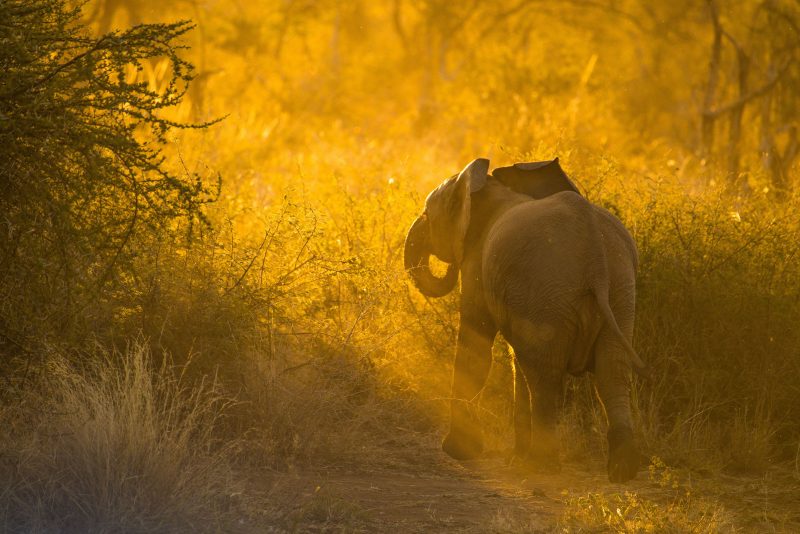Shannon Wild: From Amateur to Professional

In our interview series “From Amateur to Professional,” we will be asking established nature photographers to share their photos and see how their practices have developed, changed, and improved over time. You’ll get to see the progression of their images, learn how they got started, and find out how they transitioned from amateur to professional. To see more from this series, subscribe to our free newsletter.


Shannon Wild is an Australian wildlife cinematographer, photographer, and speaker based in Africa. A passionate wildlife lover, Shannon is a conservationist at heart who strives for technical excellence in everything she does. Growing up in Australia, Shannon specialised in reptile rehabilitation, something that fostered her passion for all animals- especially the scaly.
Shannon has worked in wild and remote regions all over the world since 2004 with clients such as National Geographic, WildAid, and the United Nations, as well as various wildlife NGOs and non-profits.
In 2017 Shannon founded Wild In Africa® – Bracelets for Wildlife, as a way to give back to conservation organizations she’s worked with all over the world.
When and why did you first catch the nature photography bug?
I got my first camera when I was working as a graphic designer, and I started to take photos in my spare time. Animals have always been a passion of mine so it was natural that I gravitated towards taking photos of them. I quickly realised that I enjoyed this creative outlet more than my day job, so I made a conscious decision to start educating myself about photography.
This was back in a time when there was no Instagram or Youtube, so I looked at the work of other photographers in magazines and books. I would try to reverse engineer the images and work out what stood out to me, and why I liked certain images. I learnt a lot through trial and error and by making plenty of mistakes.
The beauty of digital photography is that you get immediate feedback, so it can actually be a quick learning curve. You can change a setting, take a photo, and look at the back of the camera and immediately see what has changed.
Photography soon became an all-consuming passion and, over several years, I gradually made the shift from graphic design into working as a photographer. In the beginning I had to be flexible and diversified in what I was shooting, so even though my passion is wildlife I shot corporate, industrial, food- absolutely anything that would help to pay the bills!
All of these experiences helped me to hone my craft as a photographer in general, and to really learn and understand the technicalities of photography.
You need those fundamental skills in order to be able to react quickly in a situation when you are photographing moving animals and action, so being completely comfortable with your gear is essential.
Show us one of the first images you ever took. What did you think of it at the time compared to now?
I have very fond memories of this image because this was my pet lizard Raja, and he was my first photographic subject. He was a very charismatic and photogenic lizard so I practised a lot with him as the subject.
Obviously there is significant room for improvement, but for a beginner I think it is a decent effort! It is sharp, which was not that hard to do, considering I’m clearly using camera flash. It was quite a dark environment inside my house and there were a variety of lights involved, including his enclosure lights, the ambient light, and the flash- so I’m surprised this photo is as well colour balanced as it is, all things considered.
Show us 2 of your favourite photos – one from your early / amateur days, and one from your professional career. Tell us why they are your favourites and what made you so proud of them at the time. How do you feel about the older image now more time has passed?
I took this image of a Wedge-tailed eagle in 2009, so I was a few years into photography by then. I started out in 2004, so even though I have no formal training, by that stage I had been shooting for about five years. I still look back and can see how inexperienced I was, and how much I still had to learn- but in saying that, I’m still very proud of this image.
I achieved everything I wanted here: the silhouette by underexposing, a sharp capture of the moving subject, and I like the composition that allows the bird to fly into the frame, and includes a little bit of horizon to give some context.
So to be honest, I look back at this image and I’d still be proud to take this today. What I didn’t quite know back then was how to capture a scene exactly the way I wanted to, time and time again. Of course with wildlife that’s virtually impossible, but I mean this from a technical perspective.
Now I look back with eighteen years experience, and I’m obviously far more comfortable knowing what settings I would use to create a certain mood, or to capture a scene in a certain way. I’m able to execute that quickly because of my extensive experience, which really is essential with wildlife photography.
The more recent image is actually from February 2021. I like this one because so many elements came together. Obviously there is the rainbow, which then involved getting into position to have that rainbow behind the cheetah, before the cheetah moved off down the ridge and out of view.
Another reason I like this is because the sun was behind me and there’s a little bit of golden light peeking through, which then illuminated the cheetah while she briefly paused before moving off down an embankment.
There are a lot of things over which I don’t have control, but what I do have control of is being there, getting out into the field, day after day. Furthermore, in this instance I had control of my position in relation to the cheetah, and then of course I had the technical knowledge and experience to expose it properly, while still getting a sharp image in low light. So, my experience now allows me to act quickly and make the best of any given situation.
When did you decide you wanted to become a professional photographer? How did you transition into this and how long did it take?
It was a very gradual transition for me, because I had to get to a point initially where I was confident in my skills and technical ability, before I felt comfortable charging people for my work. And then, balancing that with having to pay bills and support myself, I couldn’t just leave my job as a graphic designer as soon as I picked up the camera. It definitely took a few years, and I did a lot of volunteer shoots during this period.
As my passion is animals, I did a lot of free photo shoots for dog shelters and adoption photos. This not only allowed me to practise photographing animals, but helped to get them adopted too. As an added bonus I was making great connections with potential and new owners, who might then like to purchase a full photo shoot in the future.
Early on, I started a pet photography business called Wet Nose Fotos which was a way for me to turn animal photography into a job. At this time I was still freelancing as a graphic designer and consulting as an art director. After I’d been shooting for about seven years, I felt comfortable enough to also transition into running photographic workshops with a specific focus on pet photography.
So, alongside a combination of pet photo shoots and running pet photography workshops, I was also shooting a mix of editorial and commercial jobs and I created a pet photography eBook. I also did print sales and stock image sales, so there was a mix of things that really allowed me to transition into photography as my profession.
Was there a major turning point in your photography career – a eureka moment of sorts?
A definite major turning point for me occurred when I was ten years into working as a professional photographer. I decided to sell everything I owned except my camera gear, and I packed up and moved to South Africa.
I did that because I felt like I’d reached a point in Australia where I couldn’t achieve the things I wanted while being based there. I needed to be based in Africa to fully focus on wildlife photography and have access to more opportunities, especially when it came to wildlife filming and documentaries.
This decision was a huge risk, and I essentially had to start all over again after a decade of shooting and being at a comfortable point in my career. But at the same time, I realise that I was restless and I was looking for the next challenge.
Arriving in South Africa with no network, or even a body of work that represented African species, meant I had to start all over again. This involved working for free for many years to make the connections necessary to build a folio that reflected the kind of work I wanted, which was specifically a focus on African wildlife.
Over time, opportunities came to shoot all over the world, including the Arctic, throughout Asia, and of course all over Africa.
Are there any species, places, or subjects that you have re-visited over time? Could you compare images from your first and last shoot of this? Explain what’s changed in your approach and technique.
Reptiles are a particular passion of mine: I used to be a wildlife rescuer and carer in Australia with a focus on reptile rehabilitation, so naturally I’ve spent a lot of time photographing various species. I’m always fascinated and excited by the opportunity to document them.
As aforementioned, I started out photographing my pet lizard, Raja, who lived for just over eight years (a really impressive lifespan for a lizard that generally lives for two to four years in the wild). I’ve now been lucky enough to photograph what I consider to be the pinnacle reptile: the Komodo Dragon in Indonesia.
That’s a ‘full circle’ moment for me. I’ve had the great privilege of visiting a couple of times to document the Komodo Dragons and I’m always blown away by how impressive they are.
Has anything changed in regards to how you process and edit your images?
I haven’t really changed my editing style over the years, since I found my style (which I think took a good five to seven years to really lock down). Up to the present, I haven’t shifted too far from that. The way I like to shoot and edit my images is very vibrant. This is because that’s how I see the world, and that’s how I want others to see the world.
One of the benefits of coming into photography with a background in graphic design (which I did for nine years), is that I had a lot of experience working with image files, working with other photographers’ images, and having to edit and process raw file. So really, I learnt that side of things before I ever picked up a camera.
What was the biggest challenge you faced starting out, and what’s your biggest challenge now?
I’ve faced a lot of challenges over the years, ranging from financial hardship to physical injury and severe illness. At the moment, the biggest challenge facing me is that I’m still trying to recover from breaking my back in 2018, while filming a documentary in India for National Geographic.
It was essentially a vehicle accident (in the forest) which fractured my back in two places, and caused a lot of nerve and disc damage. After constant physical therapy for three years I’m still dealing with a lot of pain and loss of strength, but thankfully I can still walk and move freely.
It’s just that pain is now a daily factor in my life. Of course, it fluctuates depending on how active I am, which means if I’m out in the field doing this very physical job, then the pain flares up and it’s a lot more difficult than it used to be.
What’s the one piece of advice that you would give yourself if you could go back in time?
This is a tough one, because I look back and there’s a lot of advice that I would give myself. To be honest it’s more to do with myself as a person, where I fit into the world, and my value. I would certainly tell myself to trust my own worth. Hard work is essential and that’s something I’ve always done, so I’d also tell myself to take time for self care, as burnout is real and it’s dangerous.
I’ve had many dangerous and painful encounters over the years, but my nearest death experience was working myself beyond exhaustion. My body completely shut down and I had to be hospitalised in Nairobi, Kenya. I still have health issues years later, but that had me bedridden for six months and very near to death.
So, taking time to recharge and take care of yourself is just as important as putting in the hard work.
You can visit Wild’s website to see more of her work. For more from this series, subscribe to the free Nature TTL newsletter.
























